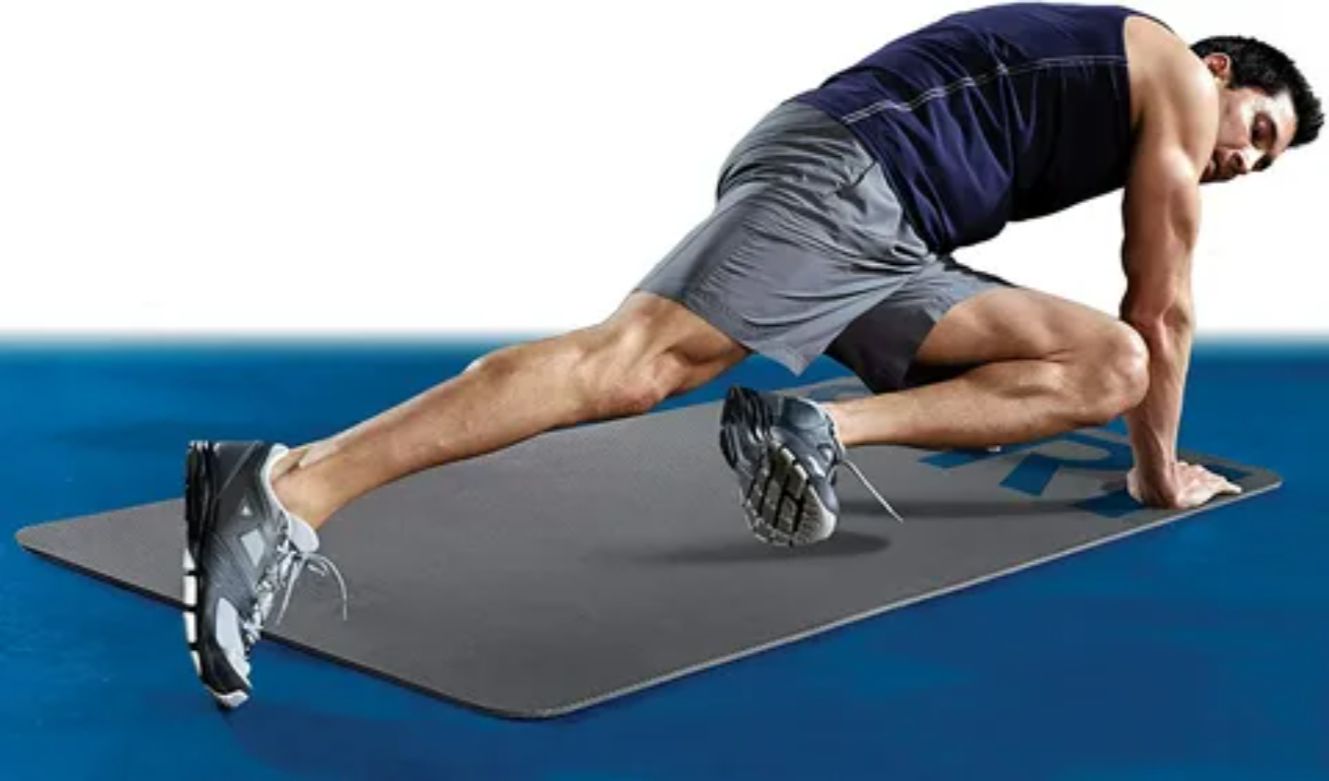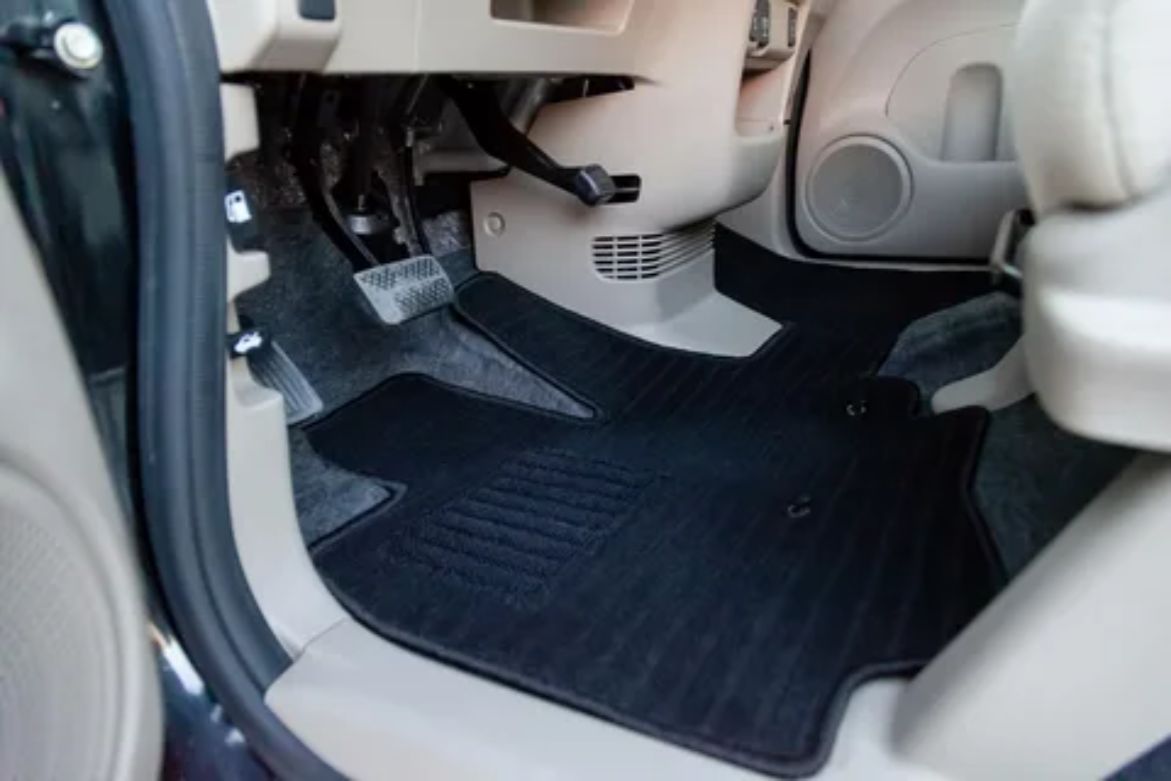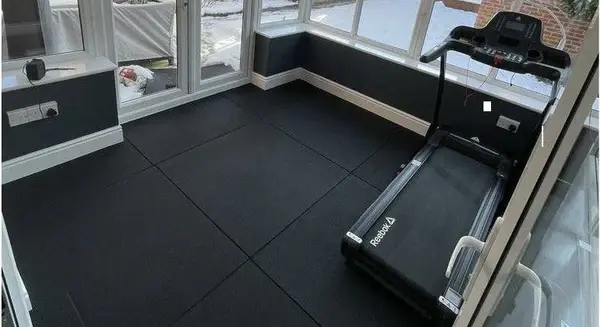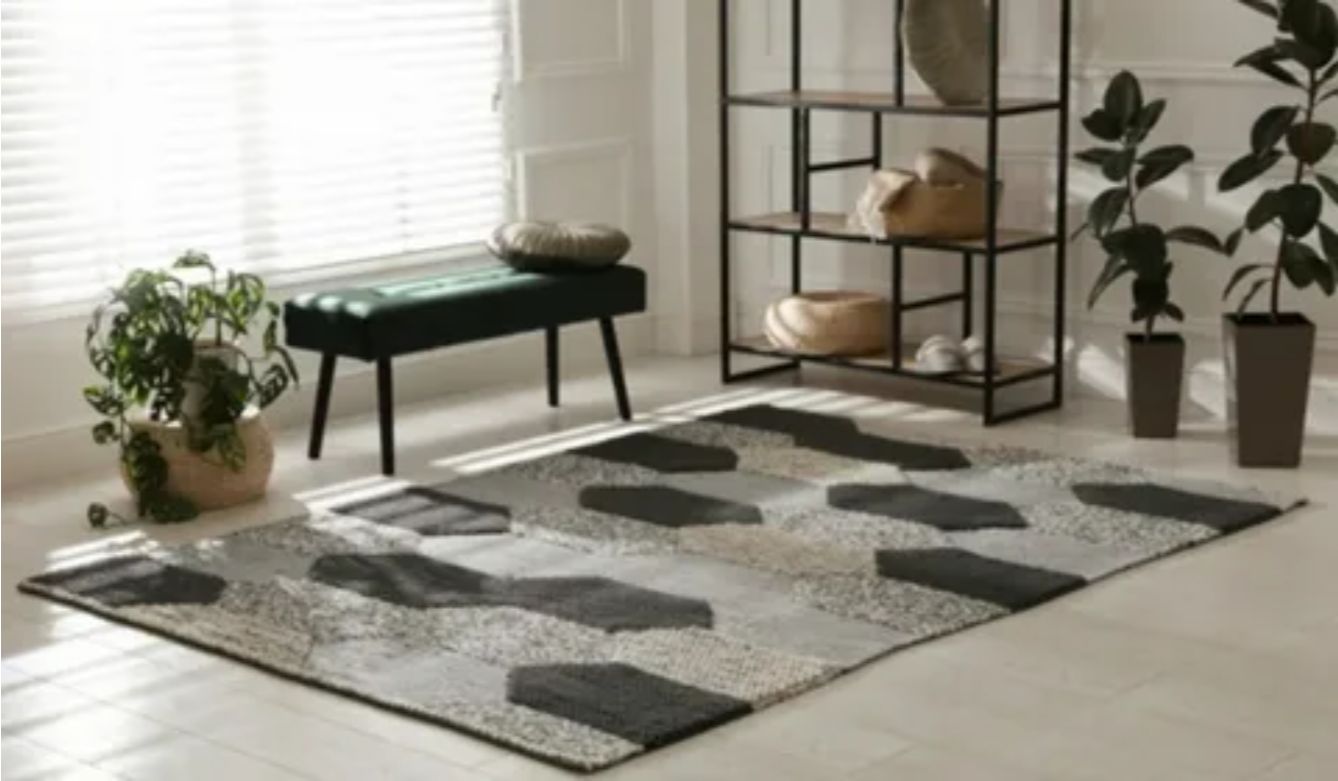Rubber flooring is the best choice for gyms, garages, and schools, due to its durability, safety, and low maintenance. When choosing rubber flooring, the structure is as important as the material. There are two major forms: rubber rolls and interlocking tiles. In this blog, we’ll break down the pros and cons of Rubber Flooring Rolls Vs Interlocking Floor Tiles. You’ll learn what rubber rolls are, their common uses, and where they perform best. Next, we’ll discuss interlocking tiles, their benefits, and when they’re the best choice. We’ll even compare both in durability, installation ease, cost, aesthetics, and ideal uses.
Understanding Rubber Flooring Rolls
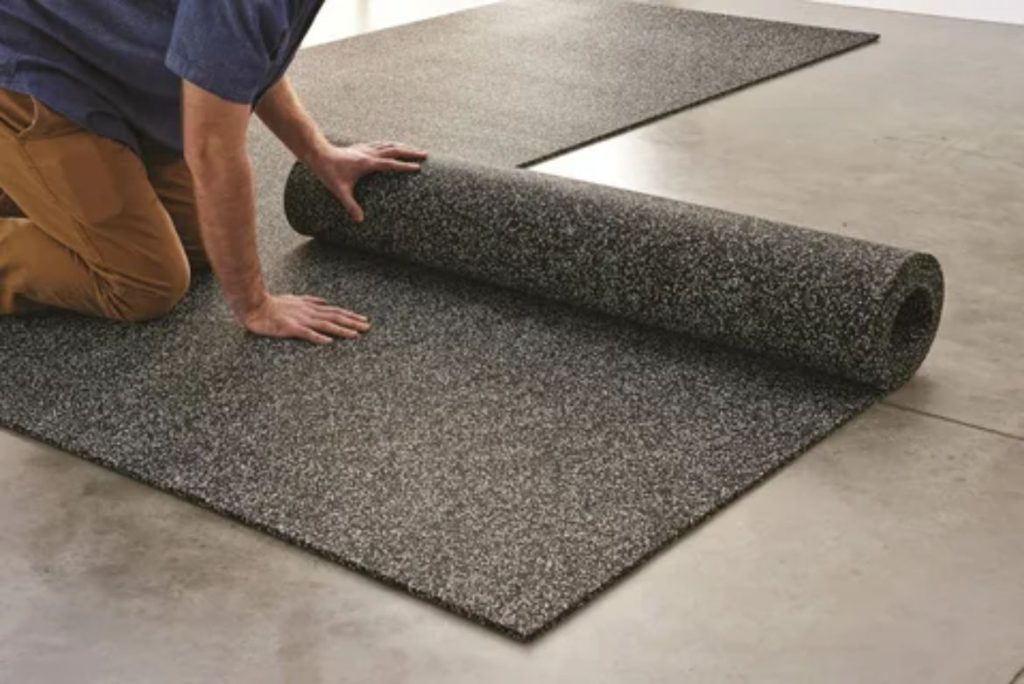
Rolls of rubber floor covering consist of long, unbroken rubber sheets of standard widths, typically 4 ft wide, which are cut to desired lengths. Rubber flooring rolls are constructed to cover vast areas at a time with fewer seams.
Typical applications:
- These rolls are widely used in commercial gyms, sports complexes, and schools.
Key benefits of rolls:
- The most popular benefit is reducing the effort in cleaning.
- Rolls offer durability, making them best for high-traffic locations.
Yet, rolls do have some drawbacks. Due to their bulk and weight, installation is more involved.
Possible limitations:
- Professional treatment is usually needed, adhesives are normally involved, and careful cutting for a proper fit is required.
In short, there are drawbacks, but rolls continue to be the best choice when a uniform surface and durability are of paramount importance.
Understanding Interlocking Floor Tiles
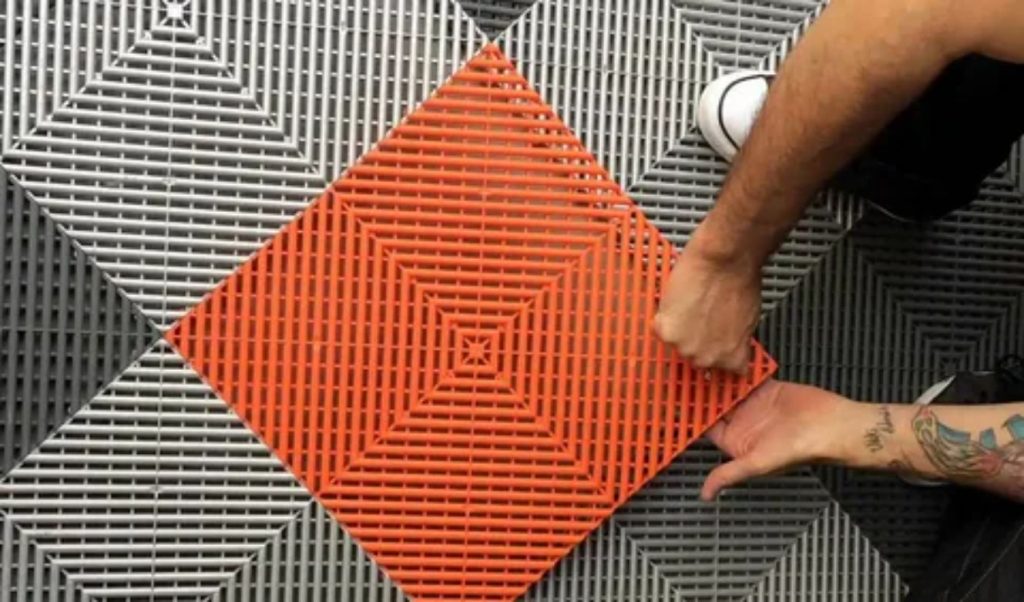
Floor Tiles
Interlocking tiles are separate square units that fit together like puzzle pieces. They are available in different sizes, usually 2×2 ft or 3×3 ft, and may be fitted without adhesives.
Commonly used;
- These tiles are mostly installed in home gyms, garages, and basements. The best advantage of these tiles is that they are very easy to install.
Advantages:
- Tiles are modular, so you can grow them, shift them, or rearrange them whenever needed. Such flexibility makes them best for temporary arrangements. Besides, tiles are available in more colors and designs than rolls, with which you can create a unique space.
Drawbacks:
- On the negative, interlocking tiles have seams that are noticeable, and they might not be as smooth-looking as rolls. They also cost more per square foot than rolls. For large areas, this adds up in no time.
Generally, tiles suit people who appreciate flexibility, convenience, and fashion at the cost of a seamless look.
Durability & Performance
Both Rubber Flooring Rolls Vs Interlocking Floor Tiles are very durable, but their performance is slightly different based on application.
Rubber rolls are constructed for heavy-duty use. They can withstand constant foot traffic, falling weights, and industrial applications well. With fewer seams, there is less chance of them splitting or becoming misaligned under stress. Rolls also have great slip resistance and good shock absorption, making them a top choice for professional gyms and sporting facilities.
Interlocking tiles are also resistant, albeit a bit less sturdy for big-time heavy-duty use. With time, seams can become more worn out, particularly in areas with extensive movement of heavy equipment.
However, tiles excel at flexibility—if a part of the floor gets damaged, you can replace single pieces without replacing the entire flooring. They also provide decent slip resistance and cushioning, which is ideal for small fitness rooms and multipurpose rooms.
Briefly, rolls take the cake in terms of ultimate durability, but tiles offer functional resilience with simple repair possibilities.
Installation & Maintenance
As for the matter of installation, it is obvious.
Rubber rolls usually need to be installed by professionals. Rubber rolls are heavy, hard to transport, and require adhesives to fit securely. Cutting accurately is also required for tight areas. After installation, maintenance is easy—sweeping, vacuuming, or mopping with a mild cleanser. Yet, in case of damage, replacement of a section is challenging because the roll needs to be cut and sealed.
Interlocking tiles are highly convenient for DIY use. You don’t need any glue or extra equipment required just snap the tiles together. This makes them perfect for quick setups or temporary flooring. Cleaning is very easy, but tiles offer several advantages: if one piece wears out, it can be swapped without disturbing the rest.
In short, rolls demand more effort, but the result is seamless, whereas tiles are very easy to install and maintain over time.
Cost Considerations
Rubber flooring prices depend on the type and installation.
Rolls are often cheaper per square foot than tiles, which makes them economical for extensive areas. Savings may be negated by professional installation costs, though, which contribute to the initial costs. Replacement can be more expensive when damage happens because the larger sections that are damaged must also be replaced.
Tiles, on the other hand, are more expensive per square foot but do away with installation fees since everyone can fix them themselves. Tiles will be cheaper in the long run as only broken pieces must be replaced and not the entire floor.
In conclusion, rolls can save money for long-term areas, while tiles are low in budget for smaller spaces.
Aesthetic & Design Options
Appearance is something to be taken into consideration.
Rolls for a professional look:
- Rubber rolls are smooth, professionally finished with few seams. They are usually solid black or spotty patterns, which are suitable in gyms and businesses but don’t present many creative possibilities.
Tiles for flexible patterns, colors, and custom layouts:
- Tiles have the upper hand in terms of variety and personalization. They come in various colors, designs, and even logo designs. Since they are interchangeable, tiles provide scope for intricate designs and layouts. For areas that desire to capture branding, school color schemes, or decorative motifs, tiles are the way to go.
In summary, rolls are best for a clean, monotonous finish, while tiles provide scope for adaptable, innovative designs.
Best Use Cases for Rubber Rolls
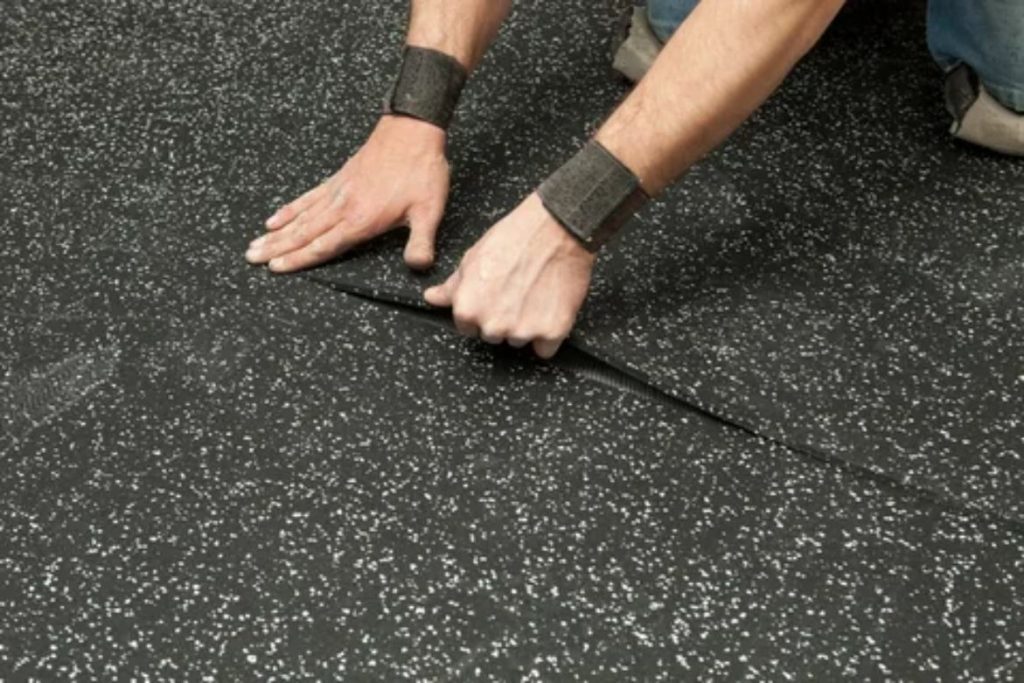
Rubber rolls are the preferred option for large, permanent setups where strength and a smooth finish are the primary concerns.
They are typically applied in:
- Perfect for schools and athletic facilities, providing secure, shock-absorbing flooring that protects students.
- Designed for industrial settings that demand toughness, where durability is important to bear heavy machinery.
In such areas, the sleek appearance of rolls also facilitates cleaning more quickly and easily. As the flooring is fixed with adhesives, it will not change its position or move apart, even under pressure. For companies or institutions seeking a professional look and heavy-duty durability, rolls are the most dependable option.
Best Use Cases for Interlocking Tiles
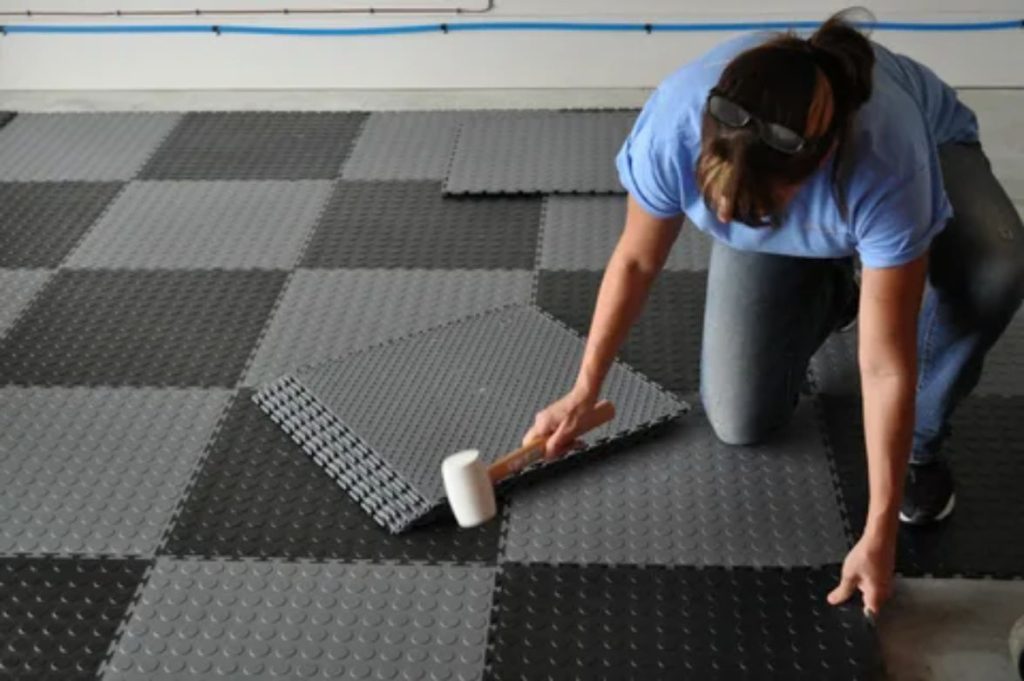
Interlocking tiles excel in applications calling for flexibility and effortless deployment.
They are ideal for:
- Home gyms, where users can install flooring themselves without professional help.
- It’s perfect for garages and basements, where layouts may change or selective coverage is needed.
- Multipurpose rooms or rental spaces, where the flooring needs to be removed or reconfigured later.
Tiles are also best for individuals who desire style choices. Because they come in different colors, patterns, and custom designs. They are best for small areas.
For anyone who desires convenience, modularity, and effortless maintenance, interlocking tiles are the better alternative.
⇒Rubber Flooring Rolls Vs Interlocking Floor Tiles: Comparison Table
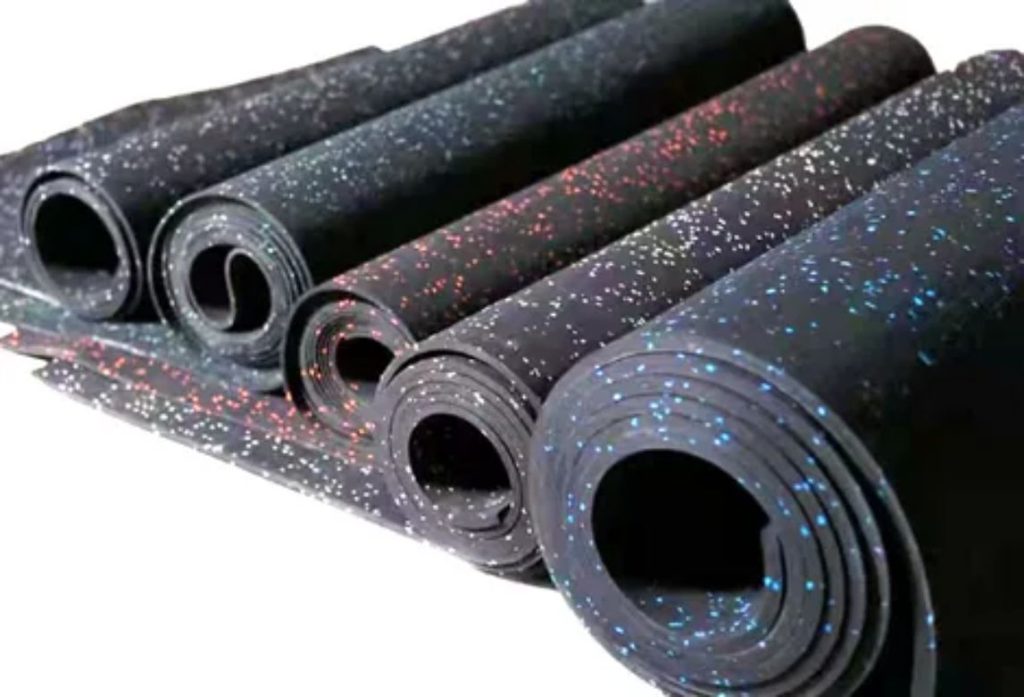
| Features | Rubber flooring | Interlocking Rubber Tiles |
| Design Options | Limited patterns and solid colors | Wide variety of colors and patterns |
| Installation | Requires professional help, more complex | Easy DIY, quick setup |
| Seams & Look | Seamless and uniform surface | Visible seams, modular design options |
| Flexibility | Best for large, permanent spaces | Great for small or changing layouts |
| Durability | Extremely durable, heavy-use friendly | Durable but easy to replace in sections |
| Cost | Lower per sq. ft. but higher installation | Higher per sq. ft. but no pro installation |
| Maintenance | Harder to replace the damaged section | Individual tiles can be swapped out easily |
Conclusion
Let’s wrap it up!
The decision between Rubber Flooring Rolls Vs Interlocking Floor Tiles is a personal choice. Rolls give a smooth, professional look, great durability, and are ideal for larger gyms, schools, and commercial centers. However, they are harder to replace in case the carpet gets damaged. Tiles, on the other hand, are also do-it-yourself-friendly, modular, and stylish, and so a great substitute for house gyms, garages, and small multipurpose areas. These are more costly per square foot but often reduce installation and maintenance expenses in the long term.
Don’t forget to like our blog and also share it with your family and friends.

